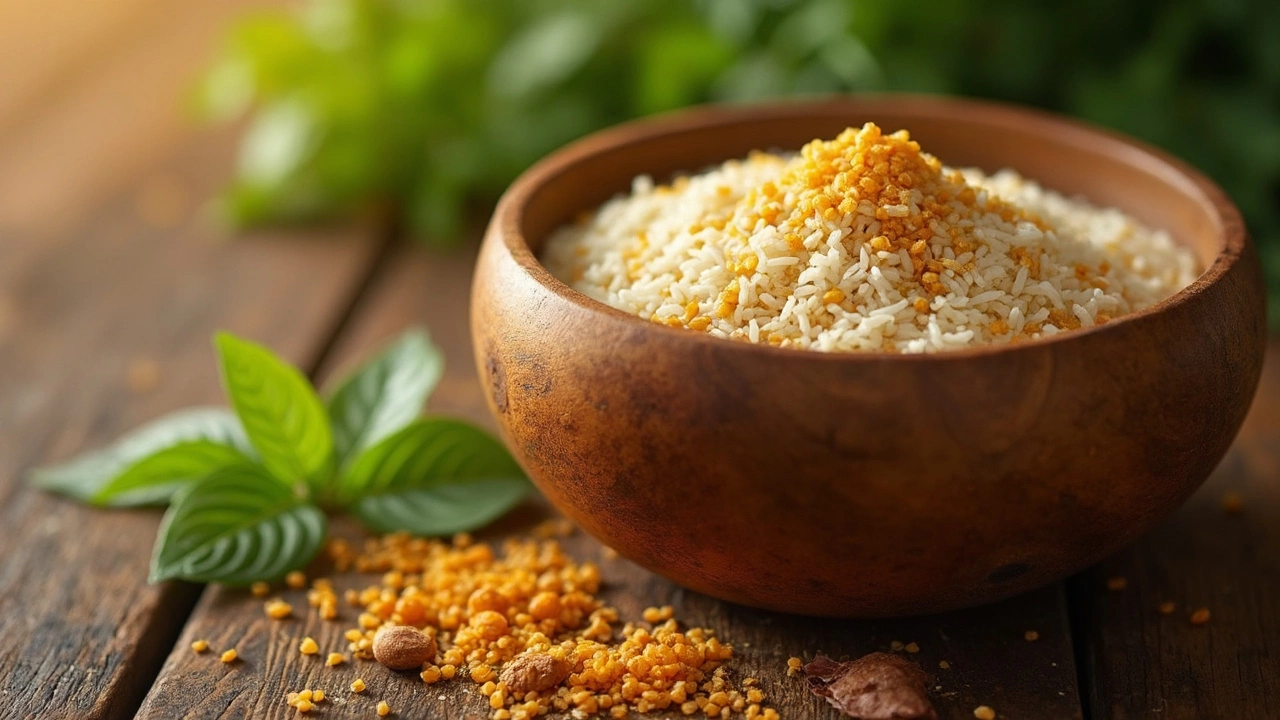Urad Dal to Rice Ratio: How to Get Perfect Balance Every Time
When working with Urad Dal to Rice Ratio, the proportion of split black gram (urad dal) to rice used in South Indian batters. Also known as Urad Dal rice proportion, it determines texture, fermentation speed, and flavor of idli and dosa.
First, meet the two main players. Urad Dal is a protein‑rich legume that, when ground, creates a foamy batter essential for puffed idlis. Its high glutelin content traps air during fermentation. Urad dal also contributes a subtle earthy taste that balances the rice sweetness. Then there’s Rice, usually a short‑grain or parboiled variety. Rice supplies carbs that feed the natural yeasts, giving the batter its rise and mild crumbly texture. Understanding how these ingredients interact helps you nail the perfect ratio without guesswork.
Why the Ratio Matters
The classic urad dal to rice ratio of 1:2 or 1:3 isn’t random. It’s a balance of protein and carbohydrate that fuels fermentation. A higher urad dal share (like 1:2) yields a softer, more airy crumb, perfect for fluffy idlis. A lower share (1:3) produces a crisper dosa edge with a slightly firmer interior. Both outcomes depend on three key factors: soaking time, grind consistency, and ambient temperature.
Soaking is the first step that sets the stage. Dal Soaking softens the urad dal, reduces cooking time, and improves the batter’s fermentable sugars. Skipping this step, as a recent post on dal soaking explains, can lead to uneven fermentation and a gritty texture.
Once soaked, the grind must be fine enough to release the dal’s natural mucilage but not so fine that it turns gluey. A common mistake is over‑grinding, which traps too much water and slows fermentation. Aim for a smooth, slightly grainy paste—think the consistency of thick pancake batter.
Temperature is the silent driver behind the ratio’s success. Warmer rooms (30‑35°C) accelerate yeast activity, meaning a 1:2 ratio can ferment in 8‑10 hours. Cooler kitchens may need 12‑14 hours, and you might want to lean toward a 1:3 mix to avoid over‑fermentation, which produces a sour taste.
Nutrition also plays a role. According to our Dal Nutrition Facts post, urad dal supplies about 25 g of protein per 100 g, while rice adds mainly carbs. Adjusting the ratio lets you swing the macronutrient profile of your breakfast: more dal for a protein‑boosted start, more rice for quick energy.
Beyond idli and dosa, the same ratio guides other batters—like vada or uttapam. The principle stays: protein creates structure, carbs feed fermentation. When you tweak the numbers, you’re essentially customizing the batter’s texture and flavor.
Let’s talk practical steps. Start with 1 cup of urad dal and 2 cups of rice for a fluffy idli batch. Rinse both thoroughly, soak dal for 4–6 hours and rice for at least 2 hours. Drain, blend the dal to a silky paste, then separately grind the rice to a slightly coarse texture. Combine, add salt, and let the mixture ferment overnight.
If you prefer crispier dosas, shift to a 1:3 ratio. The extra rice yields a thinner batter that spreads easily on the griddle, creating that signature golden edge. Remember to keep the batter’s consistency watery enough—about the thickness of a pour‑over coffee.
Common pitfalls include using the wrong rice type. Regular long‑grain rice lacks the starch needed for proper fermentation, resulting in flat batter. Stick to short‑grain or parboiled rice, which releases more amylose and creates a stronger gluten‑free network.
Finally, taste and adjust. After the initial fermentation, sample a spoonful. If it feels too sour, reduce fermentation time next round. If it’s bland, add a pinch more salt or increase the urad dal share.
All these tips converge on one idea: the urad dal to rice ratio is a flexible tool, not a rigid rule. By understanding the underlying science—protein structure, carbohydrate feeding, soaking, and temperature—you can adapt the ratio to any climate, dietary need, or recipe.
Now that you’ve got the fundamentals, the articles below dive deeper into each aspect—whether you need a quick soak hack, a protein‑focused nutrition breakdown, or a step‑by‑step guide to perfect idlis. Browse the collection to fine‑tune your batter and start serving the fluffiest idlis or crispiest dosas right at home.

Ideal Urad Dal to Rice Ratio for Perfect Dosa Batter
Discover the perfect ratio of urad dal to rice for making dosa batter that yields crispy yet fluffy dosas. Learn tips for soaking, grinding, and fermenting to enhance the taste and texture. Perfect your dosa-making skills with these helpful insights!